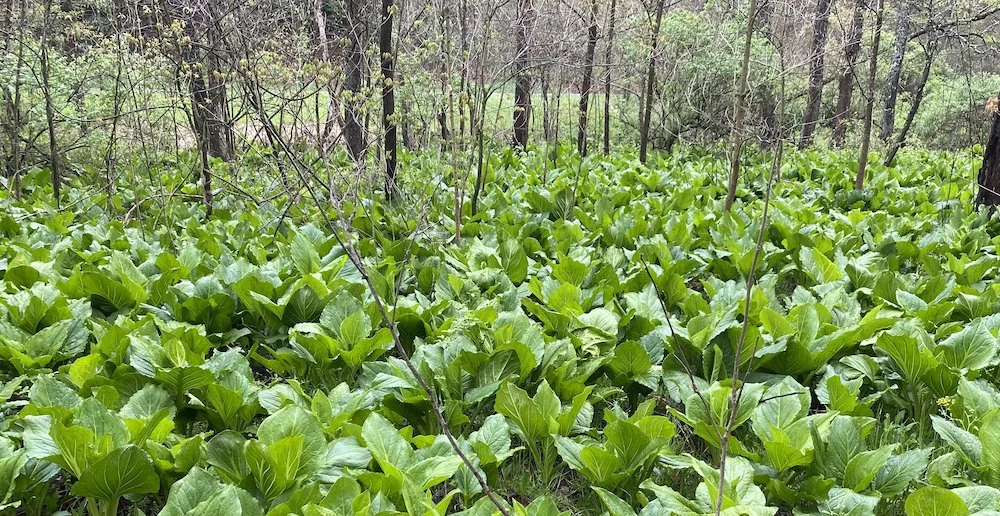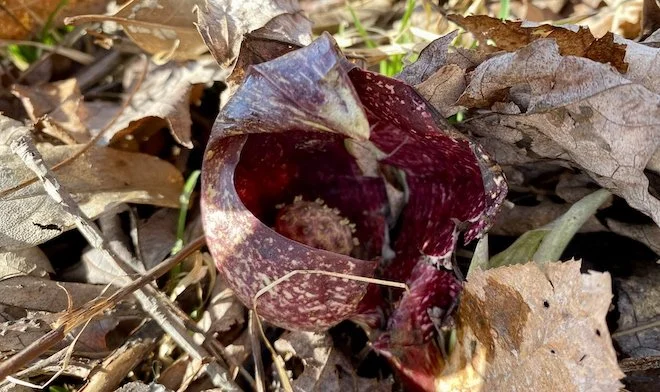A Skunk Cabbage Patch
A patch of Skunk Cabbage in April
Let's discuss a native wildflower that is just coming into bloom, one that I find fascinating and mildly disturbing: Eastern Skunk Cabbage (Symplocarpus foetidus).
Eastern Skunk Cabbage blooms in February and March and is mainly found in swampy woodlands. This time of year, it looks like a stubby, dull piece of purple and red Venetian glass jutting out of the ground, which is called a spathe.
A trio of Skunk Cabbage spathes.
The spathe encloses a sputnik-looking ball, or spadix, that is covered in little yellow flowers. By the end of April, the spathe is obscured by bunches of large leaves that make the plant look like a cabbage, per the common name.
The spadix, which contains flowers, sits inside the spathe.
Thermogenesis and Pollination
And now for the fascinating yet disturbing bits: the spathe is thermogenic, which means it raises the air temperature within its little enclosure by at least 15 degrees Celsius (59 degrees Fahrenheit). Thus, Skunk Cabbage can bloom and attract pollinators even when snow-covered in freezing February.
What kinds of pollinators are interested in this plant? Those attracted to fetid rotting flesh, which is how this pungent plant smells. So, primarily flies, gnats, and some beetles. Other beneficial insects may also visit, possibly enticed by the balmy temperatures. (Bonus points if you guessed that foetidus is Latin for foul-smelling.)
So, keep an eye out for Skunk Cabbage during your next walk in the woods!



